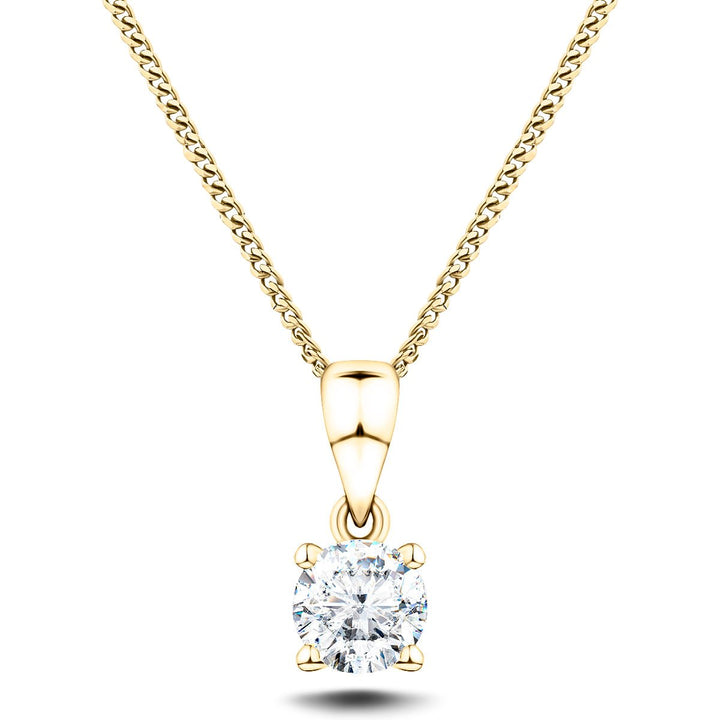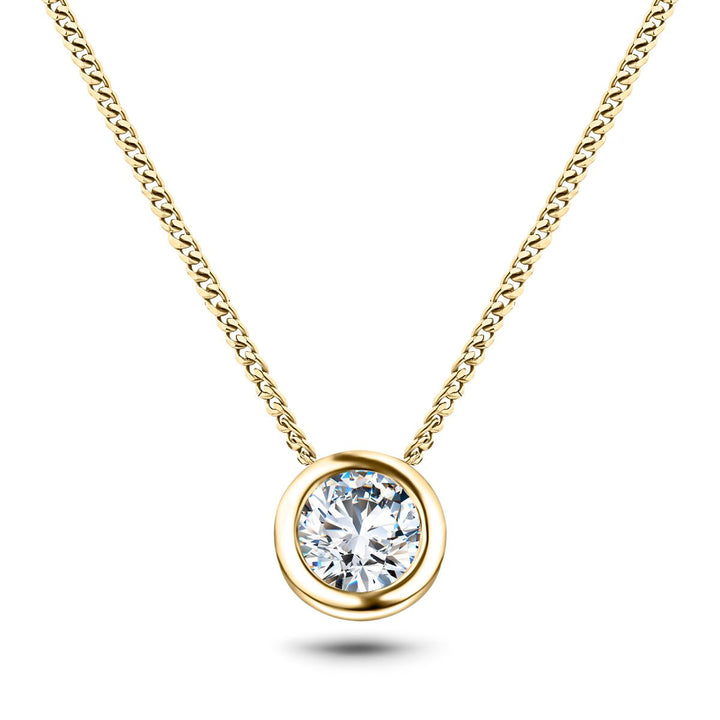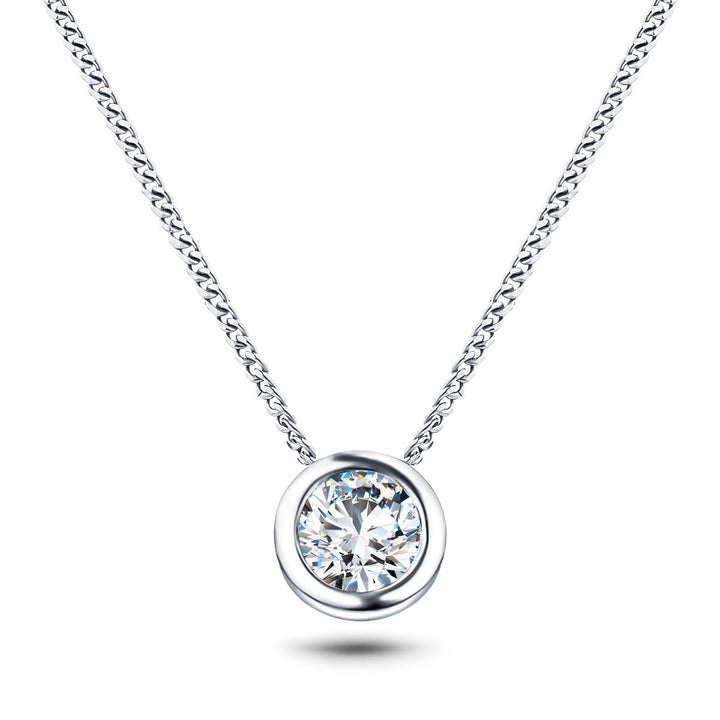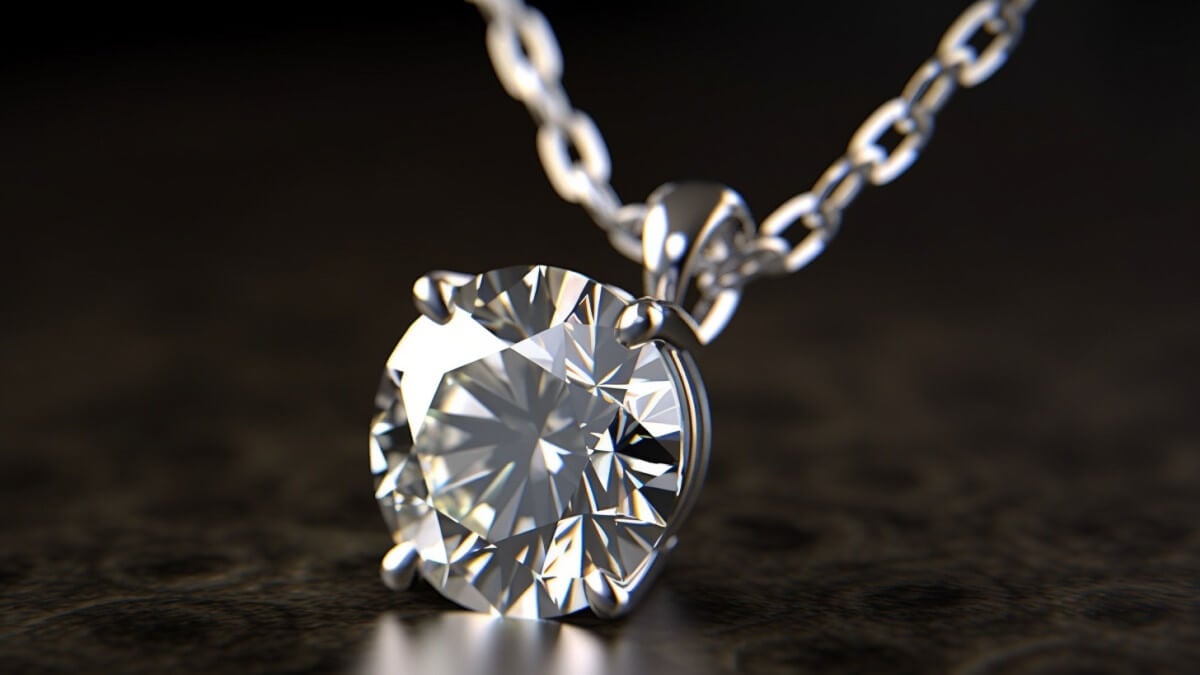Diamond necklaces have long been considered a timeless and elegant present for any occasion. Choosing the perfect diamond pendant necklace can be overwhelming due to the many styles, settings, and gemstone options. However, with the right guidance, selecting a unique and timeless necklace can be a rewarding experience.
One common belief about diamond necklaces is that the bigger the diamond, the better. However, this belief is only partially true. While a larger diamond can be impressive, it is not the only factor to consider when choosing a necklace. Other factors, such as the style, setting, and chain length, can also significantly impact the overall look of the necklace.
In this article, we will explore the different styles and settings available, the factors to consider when choosing the right diamond, and how to select the perfect chain length to complement your necklace. With this guide, you can select a diamond necklace that is elegant, unique, and ideally suited to your personal style.
Key Takeaways From This Article
A diamond pendant is a timeless and stunning gift for special occasions. There are various shapes, settings, forms, and sizes to choose from.
The style of a diamond pendant determines the cut of the gemstones. The shape of the gems determines the choice of the setting. When choosing a setting for a diamond pendant, factors to consider include diamond visibility, setting durability, and safety.
Popular options are the prong and bezel settings. The quality and shape of diamonds in a pendant depend on budget and preferences.
An excellent cut grade stone will always have more brilliance and sparkle than a less well-cut stone. The metal colour of the setting can mask yellow tints. Choosing the right chain length based on personal preference and neck measurements is also crucial.
Pendant Styles
Various styles of pendants, including solitaire, halo, cluster, designer, and locket, are available. The type you choose will also impact the choice of setting.
Solitaire pendants feature a single diamond in a simple setting, while halo pendants surround the central diamond with a ring of smaller diamonds. This can make a smaller, less expensive diamond look larger and more impressive as the smaller diamonds catch the light.
Cluster pendants combine several small diamonds to create a more intricate design, while designer pendants often feature unique and creative designs.
Lab Diamond Solitaire Necklace Pendant 0.50ct G/VS in 9k Yellow Gold

£390.00
£716.00
This elegant solitaire necklace pendant is the perfect way to show your love. This pendant is a true treasure, handcrafted in the UK with a stunning 0.50ct G/VS graded, lab-grown diamond. The diamond is IGI-certified and is set in a… read more
Locket pendants are popular for sentimental reasons and can hold a small picture or lock of hair inside. Each style offers different layering options depending on the length of the chain.
Although diamonds are the most popular gemstones in pendants, various gemstone alternatives exist.
Gemstones such as sapphire, ruby, emerald, and aquamarine can add a pop of colour to a pendant. The pendant's style determines the gemstone's cut and the setting used.
When selecting a pendant style, it is important to consider the gemstone's desired colour, shape, and size. The combination of pendant style and gemstone can create a unique and personalised piece of jewellery.
Diamond Settings
The prong and bezel settings are two popular options for securing diamonds in jewellery, with prong settings being the most popular, making up 75% of all diamond jewellery settings. Both setting types will hold the diamond securely, while the bezel setting is even more secure. A prong setting will maximise the sparkle and brilliance of a diamond, but a bezel setting gives a more subtle and elegant look.
Prong settings use thin metal prongs that grip the diamond at various points, holding it securely and allowing maximum light to pass through the stone, creating a dazzling sparkle. The number of prongs used can vary depending on the size and shape of the diamond, with four or six prongs being the most common. The prong setting is preferred for solitaire diamonds and larger stones, as it allows the stone to be the centre of attention and enhances its brilliance.
On the other hand, bezel settings encircle the diamond with a metal rim, holding it securely in place and offering better protection against chipping and accidental hits. Bezels can be either full or partial, with partial bezels allowing more light to pass through the stone. The metal colour used for the bezel can affect the visibility of yellow tints in the diamond, with white gold or platinum being the most popular choices for masking the yellow tones in lower colour graded diamonds.
While the bezel setting is less popular than the prong setting, it can be an excellent choice for diamonds with inclusions or flaws that need to be concealed. Ultimately, the choice of setting depends on personal preference, budget, and the type of diamond being used.
Lab Diamond Solitaire Bezel Necklace Pendant 0.50ct G/VS in 18k Yellow Gold

£460.00
£881.00
Capture attention with this exquisite Lab Diamond Solitaire Bezel Necklace Pendant, handcrafted in the UK from 18k yellow gold. With a round 0.50ct G/VS-graded lab diamond in a bezel setting, this necklace is both striking and elegant. The diamond is… read more
Chain Lengths
Chain lengths are an important factor to consider when choosing a necklace to match a diamond pendant, as the length can affect the overall appearance and feel of the piece of jewellery.
It is vital to accurately measure the neck's circumference to determine the ideal chain length. Standard chain lengths range from 40 to 61 cm (16 to 24 inches), with six main types of necklaces based on chain length: choker, collar, princess, matinee, opera, and rope.
When selecting a chain length, it is necessary to consider the pendant's weight and size. A heavy or large pendant may require a longer chain to balance the weight and size of the jewellery piece. Conversely, a small or delicate pendant may appear overshadowed or lost on a long chain, making a shorter length more appropriate.
Ultimately, choosing the right chain length is a matter of personal preference, and it is essential to consider both the neck measurement and weight considerations when selecting a chain to match a diamond pendant.
Lab Diamond Solitaire Bezel Necklace Pendant 4.00ct D/VVS in 18k White Gold

£9,385.00
£17,906.00
Unleash the beauty of simplicity with this Lab Diamond Solitaire Bezel Necklace Pendant, featuring a 4.00ct D/VVS round lab-grown diamond set in an elegant 18k white gold bezel setting. The IGI-certified diamond is a sight to behold, shining with a… read more
Your Next Step – Choose The Perfect Diamond Pendant!
In conclusion, choosing the perfect diamond pendant requires a thoughtful and personalised approach.
By considering factors such as style, setting, and chain length, you can create a timeless piece that reflects your individuality and elegance.
After Diamonds offers an extensive collection of real diamond pendants in various styles and settings, ensuring you'll find the perfect pendant to suit your taste.
Browse our collection of diamond pendant necklaces today, and let us help you find the perfect symbol of your unique style and sophistication. Remember, diamonds are forever!




